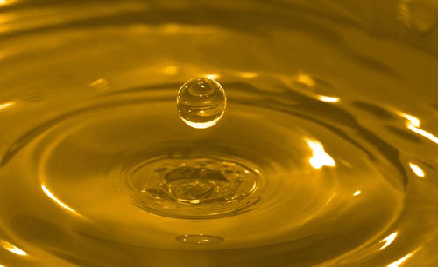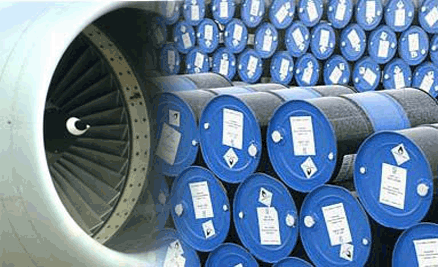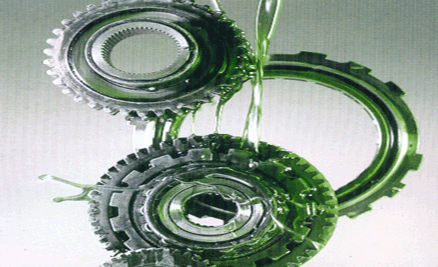Our Products
D2 Diesel
 The principal differentiators in GASOIL or D2 is the content of sulphur. Just 10 years ago, the US EPA introduced a limit of 4% sulphur in the GASOIL, whereas Europe and the rest of the world followed later. As in most other cases, when you first have to remove the sulphur, it was soon discovered ways of doing this more efficient. Then it was discovered that the sulphur, as sulphuric acid, could be traded with a good profit - which now is the motivator for extracting as much as possible. Well, pour this over limestone, and you get cement and add to it other chemicals, and you can get cement that are more valuable than the Gasoil / D2.
The principal differentiators in GASOIL or D2 is the content of sulphur. Just 10 years ago, the US EPA introduced a limit of 4% sulphur in the GASOIL, whereas Europe and the rest of the world followed later. As in most other cases, when you first have to remove the sulphur, it was soon discovered ways of doing this more efficient. Then it was discovered that the sulphur, as sulphuric acid, could be traded with a good profit - which now is the motivator for extracting as much as possible. Well, pour this over limestone, and you get cement and add to it other chemicals, and you can get cement that are more valuable than the Gasoil / D2.
Jet Fuel
 Aviation turbine fuels are used for powering jet and turbo-prop engined aircraft and are not to be confused with Avgas. Outside former communist areas, there are currently two main grades of turbine fuel in use in civil commercial aviation : Jet A-1 and Jet A, both are kerosene type fuels. There is another grade of jet fuel, Jet B which is a wide cut kerosene (a blend of gasoline and kerosene) but it is rarely used except in very cold climates.
Aviation turbine fuels are used for powering jet and turbo-prop engined aircraft and are not to be confused with Avgas. Outside former communist areas, there are currently two main grades of turbine fuel in use in civil commercial aviation : Jet A-1 and Jet A, both are kerosene type fuels. There is another grade of jet fuel, Jet B which is a wide cut kerosene (a blend of gasoline and kerosene) but it is rarely used except in very cold climates.
Lubricant
 A gas, liquid, or solid used to prevent contact of parts in relative motion, and thereby reduce friction and wear. In many machines, cooling by the lubricant is equally important. The lubricant may also be called upon to prevent rusting and the deposition of solids on close-fitting parts.
A gas, liquid, or solid used to prevent contact of parts in relative motion, and thereby reduce friction and wear. In many machines, cooling by the lubricant is equally important. The lubricant may also be called upon to prevent rusting and the deposition of solids on close-fitting parts.
Crude Oil
 Mixture of naturally occurring hydrocarbons that is refined into diesel, gasoline, heating oil, jet fuel, kerosene, and literally thousands of other products called petrochemicals. Crude oils are named according to their contents and origins, and classified according to their per unit weight (specific gravity). Heavier crudes yield more heat upon burning, but have lower API gravity and market price in comparison to light (or sweet) crudes.
Mixture of naturally occurring hydrocarbons that is refined into diesel, gasoline, heating oil, jet fuel, kerosene, and literally thousands of other products called petrochemicals. Crude oils are named according to their contents and origins, and classified according to their per unit weight (specific gravity). Heavier crudes yield more heat upon burning, but have lower API gravity and market price in comparison to light (or sweet) crudes.
Mazut
 This product is typically used for larger boilers in producing steam since the BTU content is high. The most important consideration (not the only consideration) when grading this fuel is the sulfur content, which can mostly be affected by the source feedstock. For shipment purposes, this product is considered a "dirty oil" product, and because viscosity drastically affect whether it is able to be pumped, shipping has unique requirements. Mazut is much like Number 6 Oil, and is part of the products left over after gasoline and lighter components are evaporated from the crude oil.
This product is typically used for larger boilers in producing steam since the BTU content is high. The most important consideration (not the only consideration) when grading this fuel is the sulfur content, which can mostly be affected by the source feedstock. For shipment purposes, this product is considered a "dirty oil" product, and because viscosity drastically affect whether it is able to be pumped, shipping has unique requirements. Mazut is much like Number 6 Oil, and is part of the products left over after gasoline and lighter components are evaporated from the crude oil.
Bitumen
 For civil engineering applications, bituminous materials include primarily aphalts and tars. Asphalts may occur in nature (natural asphalts) or may be obtained from petroleum processing (petroleum asphalts). Tars do not occur in nature and are obtained as conden-sates in the processing of coal, petroleum, oil-shale, wood or other organic materials. Pitch is formed when a tar is partially distilled so that the volatile constituents have evaporated off from it. Bituminous mixtures are generally used to denote the combinations of bituminous materials (as binders), aggregates and additives.
For civil engineering applications, bituminous materials include primarily aphalts and tars. Asphalts may occur in nature (natural asphalts) or may be obtained from petroleum processing (petroleum asphalts). Tars do not occur in nature and are obtained as conden-sates in the processing of coal, petroleum, oil-shale, wood or other organic materials. Pitch is formed when a tar is partially distilled so that the volatile constituents have evaporated off from it. Bituminous mixtures are generally used to denote the combinations of bituminous materials (as binders), aggregates and additives.
Welcome
Tenggara Nasa Sdn Bhd, The robust national economy driven by sustained growth for the construction and property market sectors has provided a dynamic and positive environment in which construction industry has thrived.
We have built our experience from the many successfully completed projects such us Shop Units, Houses, Road construction, and many more listed before the end of this profile. Hence, our company has become very capable in problem-solving in any problem on site. Furthermore, our company has knowledge and access to the right equipment suitable for the construction project specified by our clients desired.
We have built our experience from the many successfully completed projects such us Shop Units, Houses, Road construction, and many more listed before the end of this profile. Hence, our company has become very capable in problem-solving in any problem on site. Furthermore, our company has knowledge and access to the right equipment suitable for the construction project specified by our clients desired.
What's New
Security Equipment | 22.08.2012
We also supply a variety of Military security equipment as well, such as:
- Army Uniforms
- Tactical Gear
-Ballistic protection
- Army Uniforms
- Tactical Gear
-Ballistic protection
Body Guards | 14.06.2012
In addition, we offer security detail escort (Body Guard) with a choice of being (Armed / Unarmed) and (full time / part time).
Security Training | 27.05.2012
We offer Self Defense Training facilities for our personal and registered customers, specializing in different kinds of Martial Arts such as the following:
- Brazilian Jiu-Jitsu
- Mixed Martial Arts
- Brazilian Jiu-Jitsu
- Mixed Martial Arts
Contact
B-2-17, Plaza Damas 3Jalan Seri Hartamas 1,
Taman Sri Hartmas
50480 KL, Malaysia
Tel: +603 6143 1139
Fax: +603 6143 1129

